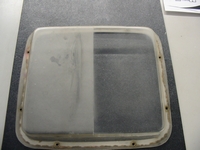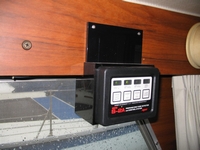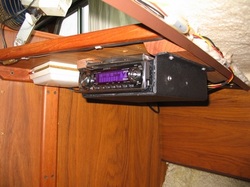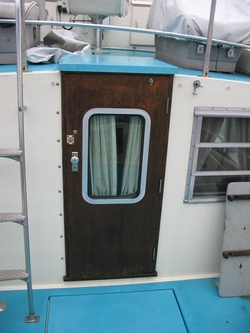There are 3 Novus products: Novus 1 is a straight cleaner and anti static preparation for acrylic. It is not a scratch remover.
Novus 2 is used to remove fine scratches or hazing.
Novus 3 is a much more aggressive scratch remover than Novus 2 and can be used for deeper scratches. Novus 3 should be followed by Novus 2.
If you have some real serious scratches I have used 1000 grit wet dry sandpaper followed by 500 grit and then Novus 3 and Novus 2. This will remove very deep scratches and bring back full clarity, but you will have a dip where the scratch was.
For my project I had some instrument covers that needed refinishing.
Novus 2 is used to remove fine scratches or hazing.
Novus 3 is a much more aggressive scratch remover than Novus 2 and can be used for deeper scratches. Novus 3 should be followed by Novus 2.
If you have some real serious scratches I have used 1000 grit wet dry sandpaper followed by 500 grit and then Novus 3 and Novus 2. This will remove very deep scratches and bring back full clarity, but you will have a dip where the scratch was.
For my project I had some instrument covers that needed refinishing.
These 2 pictures are of the guage cover of the battery charging unit. This was in very bad shape. As well as having everything rubbing against it (it was located in a locker), it appeared to have been swiped with acetone or some other solvent.
I only used Novus 2 on this and it took a long time to bring back clarity. The clarity is better than the picture shows as my focus is a bit off, as shown by the printing to the right of the bezel. Novus 2 saved me having to concoct a new bezel.
The Novus products are not a magic bullet. They do require elbow grease, but they do the job. Available, of course, at PlasticWorks.
I only used Novus 2 on this and it took a long time to bring back clarity. The clarity is better than the picture shows as my focus is a bit off, as shown by the printing to the right of the bezel. Novus 2 saved me having to concoct a new bezel.
The Novus products are not a magic bullet. They do require elbow grease, but they do the job. Available, of course, at PlasticWorks.























 RSS Feed
RSS Feed